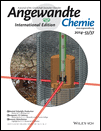A Fast Deposition-Crystallization Procedure for Highly Efficient Lead Iodide Perovskite Thin-Film Solar Cells†
We thank Mr. D. Vowles and Dr. Y. Chen for assistance with preparation of the FIB sample, and Dr. T. Williams for maintenance of the TEM imaging lens series. We acknowledge the Australian Research Council for providing equipment and fellowship support, the Australian Renewable Energy Agency, the Australian Centre for Advanced Photovoltaics, Victorian State Government (DBI-VSA and DPI-ETIS) for financial support as well as Monash University Centre for Electron Microscopy and the Advanced Microscopy Facility at The University of Melbourne for electron microscopy access. U.B. thanks the CSIRO for providing support through an OCE Science Leader position. Y.Z. was supported by the ARC grant (DP110104734) and the Tecnai F20 TEM and Quanta 3D FIB/FEG-SEM were funded by ARC grants LE110100223 and LE0882821, respectively.
Graphical Abstract
Fast and thin: Flat, uniform thin films of CH3NH3PbI3 perovskites have been produced by a fast, one-step procedure involving spin-coating of a DMF solution of CH3NH3PbI3 and immediate exposure to chlorobenzene to induce crystallization. Planar heterojunction solar cells made with these films gave a maximum power conversion efficiency of 16.2 %.
Abstract
Thin-film photovoltaics based on alkylammonium lead iodide perovskite light absorbers have recently emerged as a promising low-cost solar energy harvesting technology. To date, the perovskite layer in these efficient solar cells has generally been fabricated by either vapor deposition or a two-step sequential deposition process. We report that flat, uniform thin films of this material can be deposited by a one-step, solvent-induced, fast crystallization method involving spin-coating of a DMF solution of CH3NH3PbI3 followed immediately by exposure to chlorobenzene to induce crystallization. Analysis of the devices and films revealed that the perovskite films consist of large crystalline grains with sizes up to microns. Planar heterojunction solar cells constructed with these solution-processed thin films yielded an average power conversion efficiency of 13.9±0.7 % and a steady state efficiency of 13 % under standard AM 1.5 conditions.





